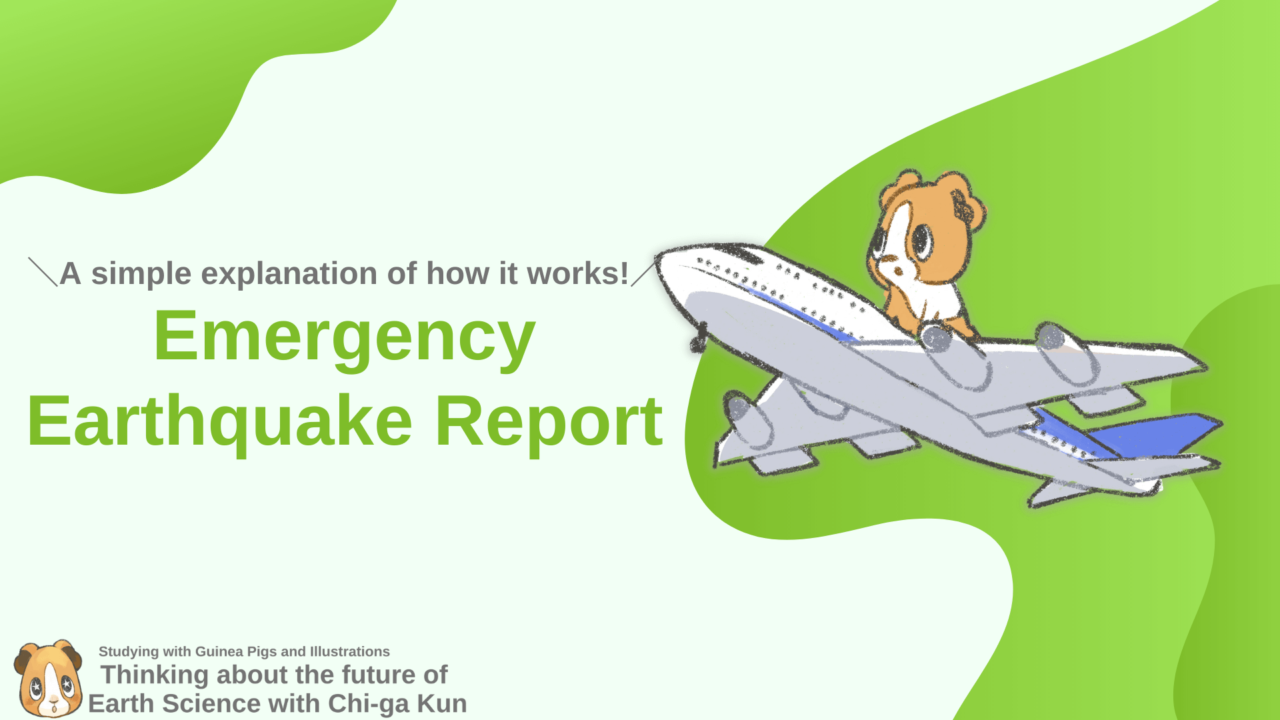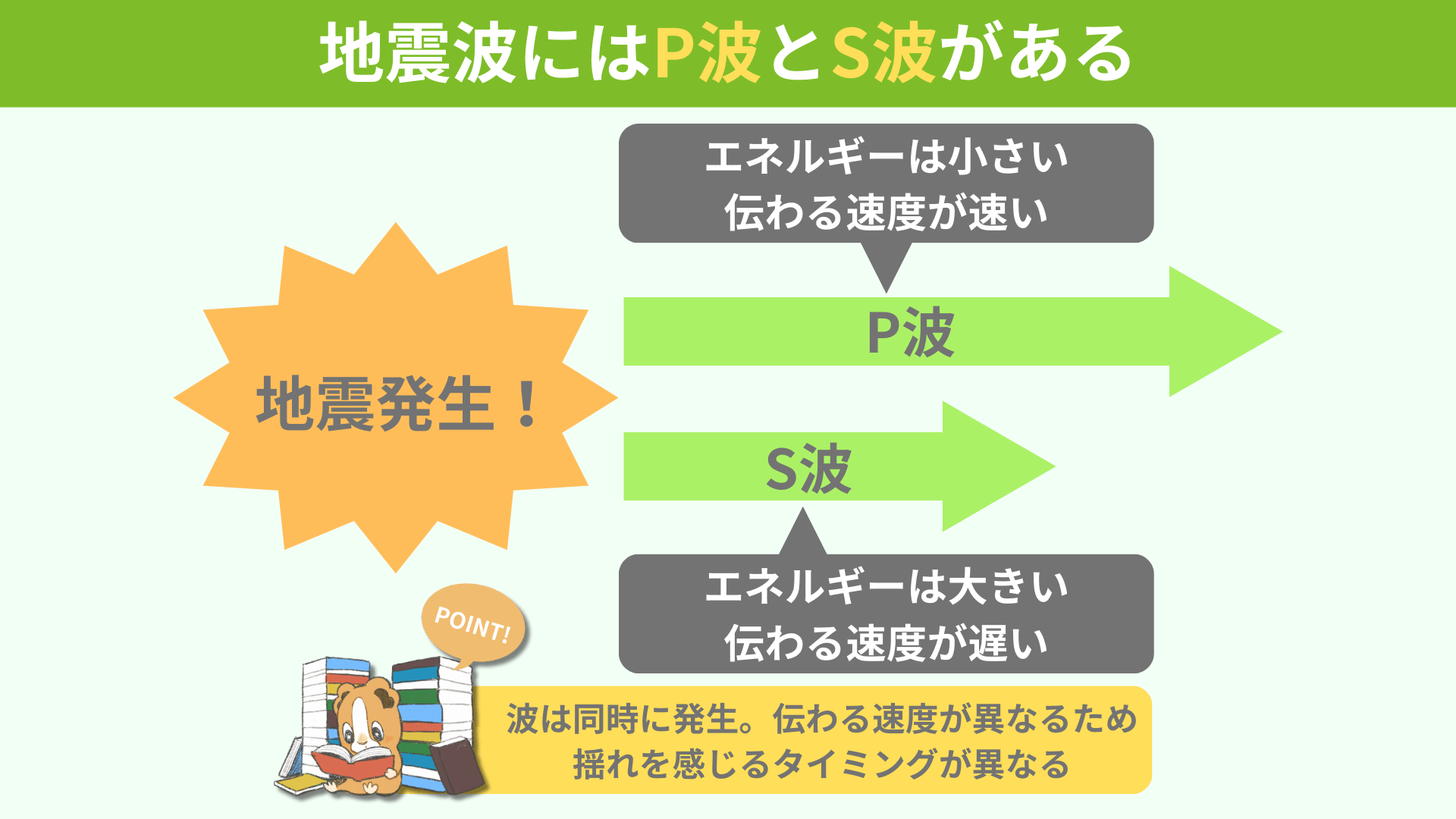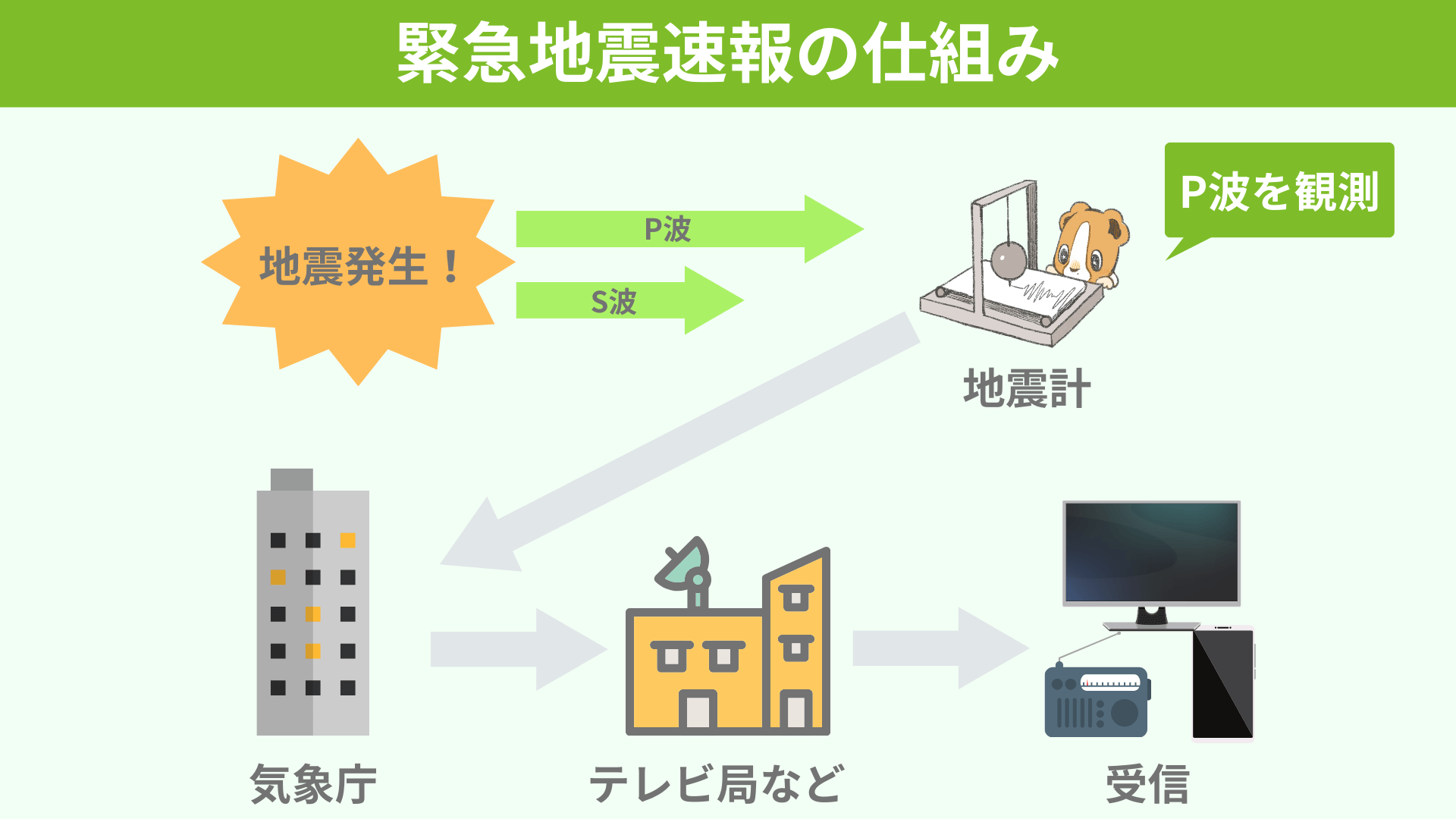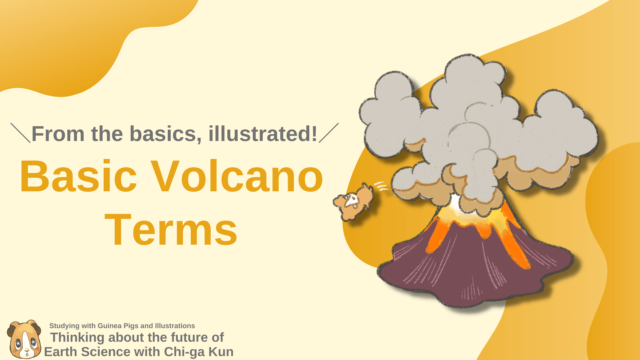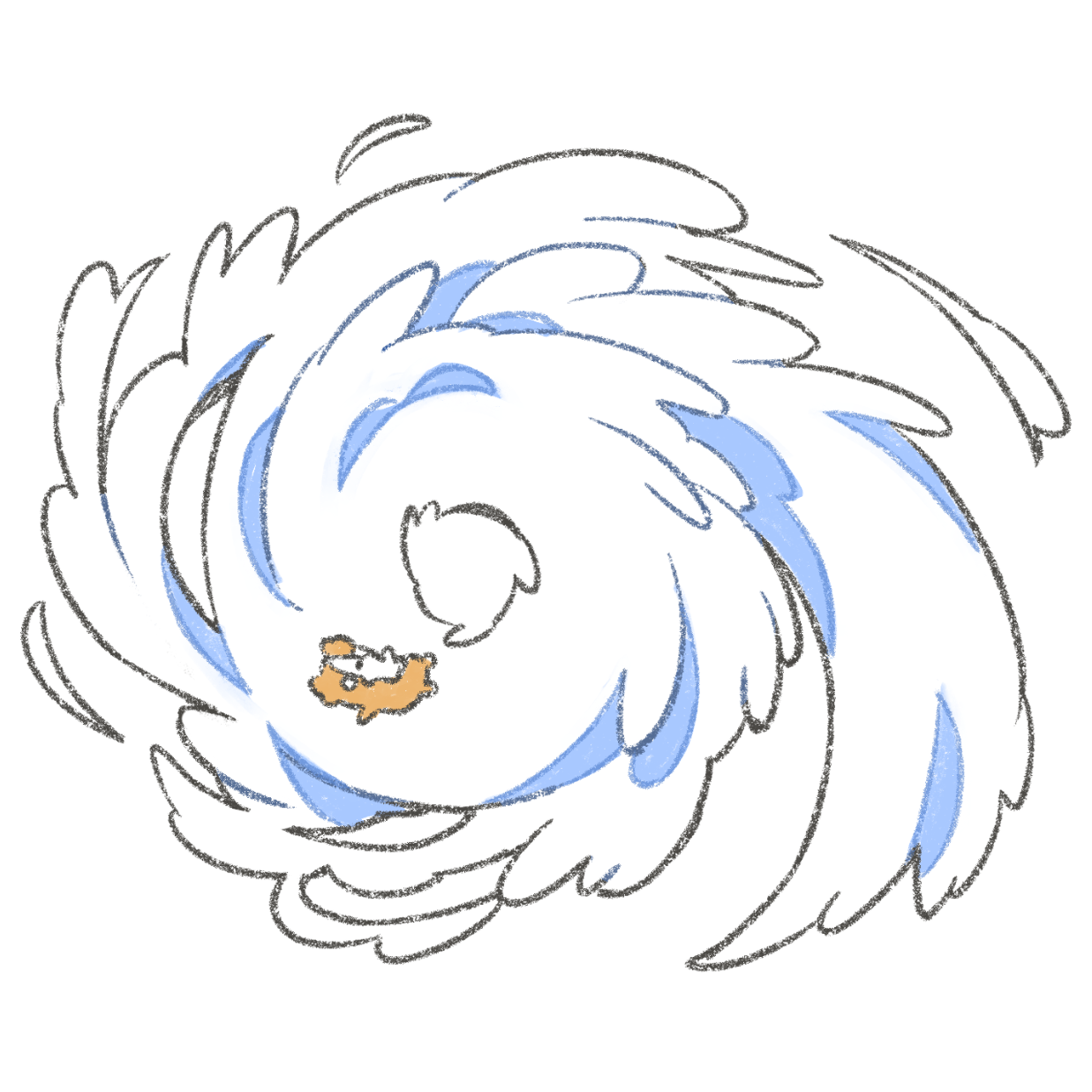スポンサーリンク
Chi-ga kun
Hakase! I just heard the earthquake early warning. I was so scared by the shrill sound!
Hakase
Good thing it wasn’t that big of an earthquake.
Chi-ga kun
Yeah.
By the way, how does the Earthquake Early Warning System work? Are they announced based on the signs of an earthquake?
By the way, how does the Earthquake Early Warning System work? Are they announced based on the signs of an earthquake?
Hakase
Actually, that’s not true. Earthquake Early Warning is issued after an earthquake occurs.
In this article, I will explain in detail how the Earthquake Early Warning System works!
In this article, I will explain in detail how the Earthquake Early Warning System works!
The Earthquake Early Warning System is indispensable for living in Japan, a disaster-prone country.
How exactly does this system work?
Let’s learn about Earthquake Early Warning System with the guinea pigs!
Contents
スポンサーリンク
Features of Seismic Waves
Hakase
To understand how earthquake early warning systems work, you first need to understand the characteristics of seismic waves.
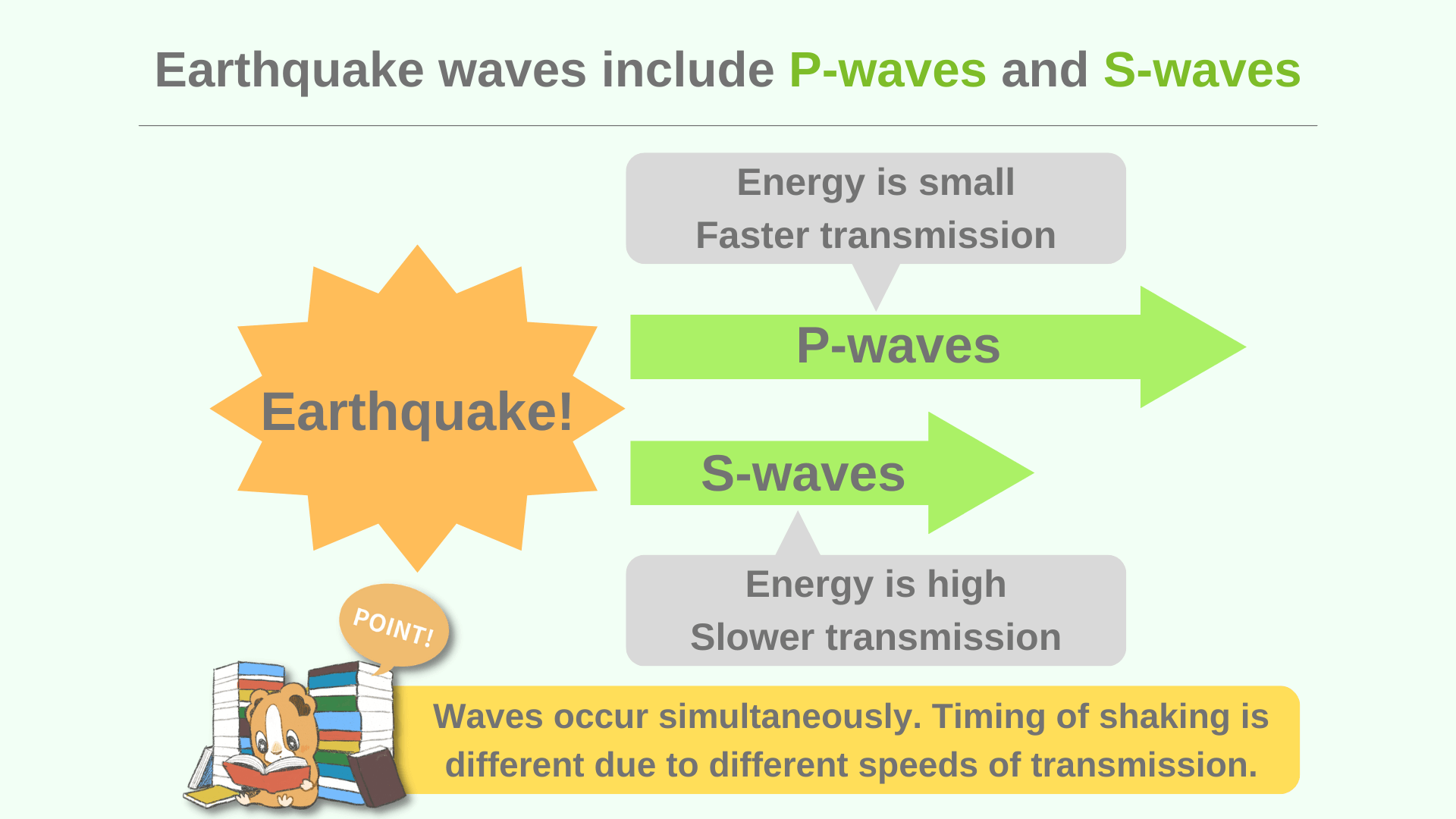
Hakase
When an earthquake occurs, P-waves and S-waves are generated simultaneously.
The P wave is characterized by its low energy and faster transmission speed, while the S wave is characterized by its high energy and slower transmission speed.
The P wave is characterized by its low energy and faster transmission speed, while the S wave is characterized by its high energy and slower transmission speed.
Chi-ga kun
When you felt the shaking of an earthquake, the first vertical shaking was the P-wave, and the big horizontal shaking that came later was the S-wave, right?
Hakase
Right, let’s keep in mind that the different speeds at which P-waves and S-waves travel are different, and therefore the timing at which the shaking is felt is different.
Chi-ga kun
I know that big tremors that cause damage are caused by S-waves!
How Earthquake Early Warning Works
Hakase
After understanding the nature of these seismic waves, I will explain the mechanism of Earthquake Early Warning.
The mechanism can be summarized in one sheet as follows.
The mechanism can be summarized in one sheet as follows.

Hakase
Of the P-wave and S-wave that are generated when an earthquake occurs, the P-wave, which travels faster, is observed first. This information is then passed on to the Japan Meteorological Agency (JMA), and if the earthquake is judged to be large, it is also passed on to TV stations and other organizations for distribution to us.
Chi-ga kun
I see! In a word, they observe the P-wave, which travels fast, and issue a quick report before the S-wave, which causes damage, arrives!
Hakase
That’s what I mean.
Chi-ga kun
I thought they were predicting the quake before it happens and sending out quick updates, but I didn’t realize they were sending out quick updates after it happens!
Sounds like a race against the seismic waves!
Sounds like a race against the seismic waves!
Hakase
It is. Therefore, when the earthquake is close to the epicenter, the time difference between P-waves and S-waves is small, and it is difficult to report an earthquake early before the tremor is felt.
Earthquake Early Warning announcement conditions
Chi-ga kun
By the way, how big an earthquake is predicted when the Earthquake Early Warning is announced?
Hakase
It is announced for shaking greater than intensity 5 lower at two or more locations.
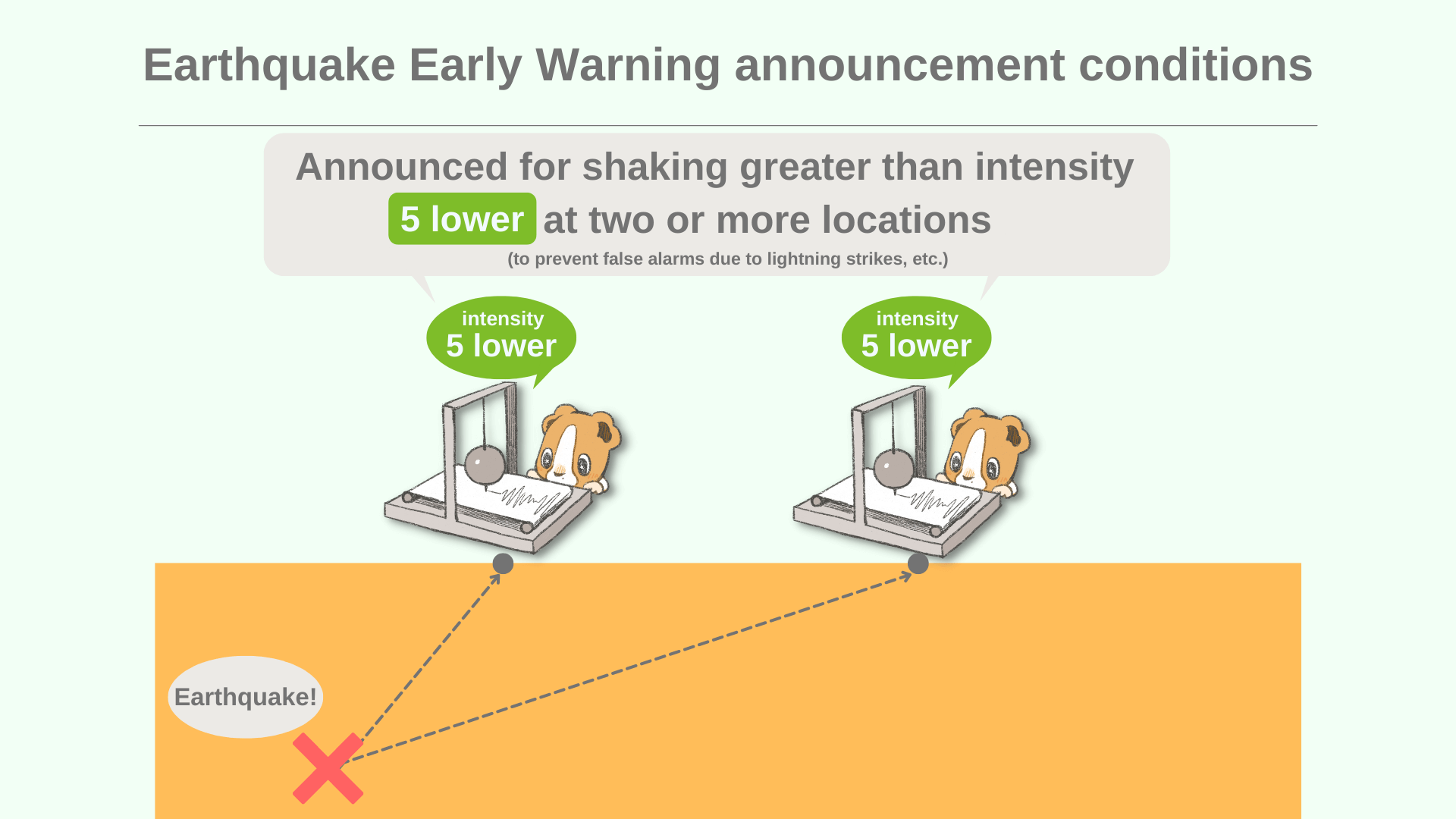
Chi-ga kun
I understand that a seismic intensity of 5 lower is the standard!
But why more than two locations? Normally, I think that an earthquake early warning should be released if a tremor of intensity 5 lower is predicted at even one location….
But why more than two locations? Normally, I think that an earthquake early warning should be released if a tremor of intensity 5 lower is predicted at even one location….
Hakase
If you set it to one location, there is a possibility that the earthquake early warning system will be wrongly alerted if the seismograph mistakenly activates due to a lightning strike or some other reason.
Chi-ga kun
I see, the reason for more than one location was to prevent false alarms!
Summerly
Hakase
In this report, I explained the mechanism of earthquake early warning systems. If you remember it in relation to the nature of seismic waves, the system should make sense to you.
Chi-ga kun
It made so much sense! It’s a shame that the earthquake early warning system is helping me, but I didn’t know how it works. I will tell my friends about it.
Hakase! Thank you so much for today!
Hakase! Thank you so much for today!
Thank you for reading to the end!
スポンサーリンク





